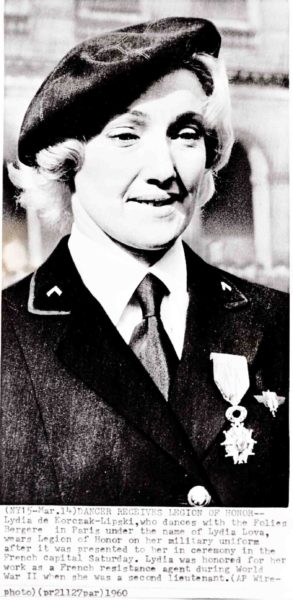First of all, my apologies to Mr. Izbicki, author of The Naked Heroine (see recommended reading below). I racked my brain trying to come up with a catchy title for this blog and I always returned to the title of his 1963 book, The Naked Heroine. It’s sort of like one of my more popular blogs, Cyndi Lauper and the Naked Princess. (Click here to read the blog.) As you all know, sex sells.
One of my prior blogs was about Josephine Baker (An African American in Pre-WWII Paris, click here to read). Josephine was an entertainer and stripper in Paris during the interwar period (the years between the two World Wars) and she became an international celebrity in those twenty years. During the German occupation of France, Josephine worked for the French Resistance collecting sensitive Nazi information from the German officers with whom she hobnobbed. Today, you will meet a young lady like Josephine but who structured her career in somewhat the reverse order. Lydia was first a French résistant and then after the war, spent the rest of her life taking off her clothes at the Folies Bergère and other popular clubs around Europe.

Besides being strippers and résistants, Lydia and Josephine shared one other attribute: they were both highly decorated French war heroines. Read More The Naked Heroine

